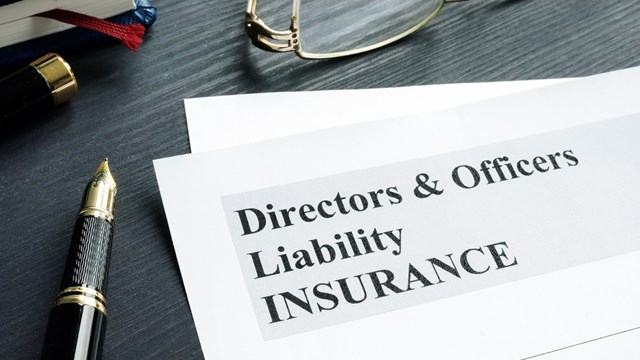For many, the topic of insurance can be a bit overwhelming. Even the terms we use as insurance purchasers differ substantially from the terms industry professionals use when discussing and settling claims - which can leave laymen feeling like we need a translator to make sense of what exactly we’re paying for, what’s covered, and (even more importantly) what’s not.
For example, take the expression ‘total loss.’ The average policyholder likely takes it to mean that there’s no hope of repairing the asset in question, whatever that may be. To an insurance professional however, ‘total loss’ means something else. Replacement isn’t really the issue. It’s more a matter of numbers; are the proceeds from the claim enough to repair the asset to its prior state? And in the world of insurance, that’s only the beginning - so it’s incumbent on boards, managers, and even individual owners and shareholders to better understand what’s covered, what’s not, and how a claim is made.
Types of Loss
Loss - of property, possessions, even of life - is the basis of the entire insurance business, and therefore the industry has as many words for loss as the Inuit have for snow. That said, the basic terms most of us need to be familiar with are direct loss, indirect loss, partial loss, and catastrophic loss.
According to Insurancepedia.com, these different losses can be defined as follows:
Direct loss refers to physical or financial loss or injury resulting directly from an unbroken chain of events, or a proximate cause that led to a risk covered by an insurance policy. The latter refers to a cause that immediately precedes the damage or injury, and “without which or in case of the presence of supervening events, no damage or injury would have resulted." An example of direct loss would be if a tornado struck your town and took the roof off your building; your direct loss would include the damage to the structure, as well as to any equipment, furniture, inventory, etc.
Indirect loss is ”an expense caused by damage or injury to insured individuals or property that is beyond the scope of the covered damage. This expense is attributable to the covered loss, but is not part of the covered loss itself." If that same tornado destroys the roof of your store, not only are there rebuilding costs, but the business cannot operate until the damage is fixed. Income lost during the rebuilding - and after it, if customers stick with the alternatives they found in the meantime - represents indirect loss.
Partial loss refers to damage to an insured property that is not total - meaning that it does not prevent the property from performing its function, nor does it exceed the coverage limit of the insurance policy. A fire that destroys one room, but not the entire house, would be an example of partial loss.
Catastrophic loss refers to a loss that is random and extremely serious - one that has a devastating effect and cannot be foreseen, and therefore very difficult to make whole without insurance. Catastrophe insurance exists to prevent individuals and businesses in the event of a major severe event that results in losses that are much larger than usual. Examples of catastrophic loss would be the damage and destruction caused by hurricanes or wildfires.
Building vs. Unit
Of course, the lynchpin question about any insurance policy is, ‘What does it cover?’ In a condominium or co-op, the building’s insurance covers the common areas and limited common areas, and to some extent - depending on the policy - certain structural components of your unit. Most owners (and renters too, if they’re smart) carry their own individual policy to cover the contents of their apartment itself.
Ryan Fleming, an insurance professional with JGS Insurance based in Holmdel, New Jersey, clarifies further: “There are basically three options for what’s covered: bare-walls, single-entity, and all-in coverage. Bare walls property coverage is provided for all common and limited common elements - coverage extends up to the unfinished interior surfaces. Single-entity property coverage is provided for all common and limited common elements, as well as the units as defined in the building’s master deed and bylaws. Coverage extends to what can be considered an original base model unit, or how the unit was sold at its original conveyance, depending on the wording of the governing document.”
Fleming continues, “All-in coverage exists for all parts of the building structure, including any upgrades, betterments, improvements, etc. within the units. Your coverage vis a vis the building, association, or corporation depends on what kind of coverage the property has.”
In addition, homeowners often have insurance for their individual units, which generally also covers contents. Your individual insurance should cover items excluded by any or all of the three types of policies described above.
Filing a Claim
Here is a general breakdown provided by Fleming outlining the steps for correctly filing a claim.
Habitational Claims Steps
Ensure that all unit owners notify the property managers of a loss when it occurs
Notify the proper authority if necessary – fire department, water company, police department, etc.
Secure the building – whether it is a fire or water loss, it is important to secure the building to ensure no further damage occurs
Make any necessary temporary or emergency repairs, such as calling a remediation company to go in and dry out the unit, board up windows, set up temporary electric power, etc.
The association should report the claim to their carrier, and all affected unit owners need to report the claim to their own homeowners’ carrier
Timeline for a Reported Building Claim
Claim is reported to agent
Claims representative will process a claim with the association’s carrier
Within 2 days an adjuster will contact the property manager to set up an inspection
All communication will be with the property manager; the only communication an adjuster will have with unit owners is to access the units for an inspection. This is because in a building claim, the unit owners are not the insured - the building itself is
After the inspection takes place, the independent adjuster will complete estimates and compose a report
Within 30 days, depending on how extensive the loss is, the report will be completed and sent to the CAU adjuster for review
A coverage determination is made by the CAU adjuster
If coverage is afforded, the estimate and check will be sent to the property manager
It is up to the property manager, along with the board, to either manage the repairs or disperse the funds to the affected units.
As an owner or shareholder, make sure you are aware of the terms of your policy and those policies that cover your association or corporation. Knowing that information before a crisis hits can make getting through an already-tough situation a little easier.







Comments
Leave a Comment